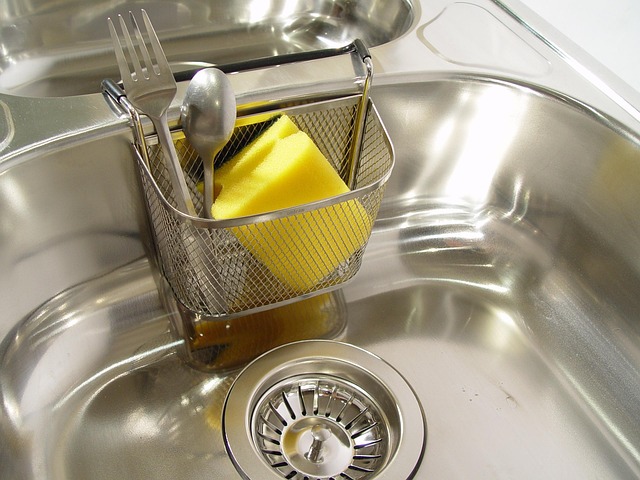The adoption of touchless technology in modern kitchen faucets has surged due to consumer demand for convenience and hygiene, driven by market preferences and health concerns. Advancements in sensor technology and material science have fueled this growth, making touchless fixtures increasingly popular worldwide in kitchens, bathrooms, and public spaces. This trend prioritizes hands-free operation to reduce germ spread while offering enhanced control over water flow and temperature, aligning with contemporary design trends that emphasize sleek aesthetics and smart functionality. Modern kitchen faucets integrate technology seamlessly, featuring touchless operation, temperature control, and automatic water sensors, elevating user experience and hygiene standards.
In today’s world of advanced technology, touchless fixtures are transforming our daily routines, especially in kitchens. This innovative approach to faucet design offers a hygienic, hands-free experience, revolutionizing the way we interact with our surroundings. The rise of touchless technology in fixtures is not just a trend but a response to evolving consumer needs and a desire for convenience and cleanliness. This article explores the motivation behind this design shift, its historical context, and how modern kitchen faucets are redefining our spaces. We’ll delve into the technology behind them, uncovering the mechanics that make them work and discussing future trends that promise an even smarter, more sustainable home.
- The Rise of Touchless Technology in Fixtures
- – Exploring the motivation behind touchless fixture design
- – Historical context and early adoption in public spaces
- Modern Kitchen Faucets: A Closer Look
The Rise of Touchless Technology in Fixtures
In recent years, there has been a significant shift towards touchless technology in various aspects of our daily lives, and fixtures are no exception. The rise of touchless fixtures, particularly in modern kitchen faucets, is driven by both consumer preference and health considerations. Today’s homeowners and business owners alike are seeking convenient and hygienic solutions for their spaces.
Touchless technology offers a range of benefits, from hands-free operation that reduces the spread of germs to enhanced user experience with precise control over water flow and temperature. These advanced fixtures have become increasingly popular in kitchens, bathrooms, and public spaces, reflecting a modern approach to design and functionality. The market for touchless kitchen faucets, in particular, has experienced rapid growth, fueled by innovations in sensor technology and material science.
– Exploring the motivation behind touchless fixture design
In recent years, there’s been a noticeable shift in fixture design, driven largely by advancements in technology and an increasing focus on hygiene. Touchless fixtures, such as modern kitchen faucets, have emerged as a popular choice among consumers seeking convenient and sanitary solutions. The motivation behind this design evolution is clear: to minimize physical contact with commonly touched surfaces, reducing the risk of cross-contamination. With touchless technology, users can enjoy hands-free operation, simply using sensors or other activation mechanisms to initiate water flow and control functions.
This innovative approach not only caters to growing health concerns but also aligns with contemporary design trends that prioritize sleek aesthetics and smart functionality. Modern kitchen faucets equipped with advanced touchless technology offer both form and function, enhancing the overall user experience while promoting a cleaner living environment.
– Historical context and early adoption in public spaces
In the historical journey of sanitation and hygiene, touchless fixtures have emerged as a significant innovation in public spaces. While the concept may seem modern, its roots trace back to early 20th-century advancements in public health. Public restrooms and communal kitchens were among the first areas to adopt touchless technology, driven by the need for enhanced cleanliness and efficiency. Early models, though rudimentary by today’s standards, laid the groundwork for what we now take for granted in modern kitchen faucets.
This early adoption was fueled by the recognition of the benefits: reducing the spread of germs, minimizing contact surfaces, and providing a more hygienic experience. As technology advanced, these fixtures evolved to incorporate sensors, improved mechanics, and sleek designs, transforming from functional tools into elegant and efficient components that enhance any space, including modern kitchens.
Modern Kitchen Faucets: A Closer Look
Modern kitchen faucets are more than just functional fixtures; they’re sophisticated pieces that blend technology and design seamlessly. These advanced systems offer a range of innovative features aimed at enhancing user experience and promoting hygiene. Touchless operation, for instance, has become a standard in modern kitchens, eliminating the need for traditional handles and allowing for hands-free use. This not only reduces cross-contamination but also adds a sleek, futuristic aesthetic to any space.
Furthermore, these faucets often come equipped with temperature control, providing users with precise adjustments for hot or cold water. Some models even feature integrated water sensors that activate automatically, ensuring convenience while minimizing waste. The design of modern kitchen faucets is characterized by clean lines and minimalist styles, perfectly aligning with contemporary interior trends. They are designed to withstand daily use while maintaining their aesthetic appeal, making them a popular choice for both residential and commercial kitchens.
The evolution of touchless technology in fixtures, particularly modern kitchen faucets, represents a significant leap forward in both functionality and hygiene. By eliminating the need for physical contact, these advanced systems not only cater to contemporary lifestyle preferences but also play a crucial role in maintaining cleanliness, especially in high-traffic areas like kitchens. As we move forward, expect to see further innovations that integrate seamlessly with smart home ecosystems, enhancing user experiences while ensuring a safer, more hygienic environment.
